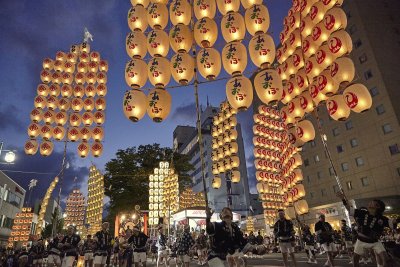Tanomi Festival – Early September
The “Tanomi Festival” later became the “Hassaku Festival”—written in a different kanji character to mean festival for ‘pleading’—among merchants and samurai warriors, and evolved as a rite to foresee if riches would be amassed and a clan would be secure in the future.
In the old days, Japanese farmers used to go around the homes of friends and acquaintances on Hassaku, the first day of the eighth month of the year in the old calendar, carrying the first ears of rice harvested on that day to pray for a good harvest and to thank the Gods for being able to grow rice. These actions were called “Tanomi”. A time of year that has been noted in history as when typhoons had been feared, this period coincides with the two hundred and tenth day since the beginning of spring. Since the days when natural disasters were considered to be curses of the higher beings, people had prayed so damage would be minimal, and they buried offerings of money hoping for the safety of their family members. Such customs began to spread throughout the country, and they included the festival of the wind, hoped to appease the God of the wind. Over the years, these festivals became integrated and later led to the Hassaku festival, which eventually started to be observed throughout Japan.
Rieko Ido
Conducting research into Japanese customs and knowledge from ancient times, and applying technical analysis of these findings to modern lifestyle. Kokugakuin University graduate. Teaches at Tama Art University.
 0
0























